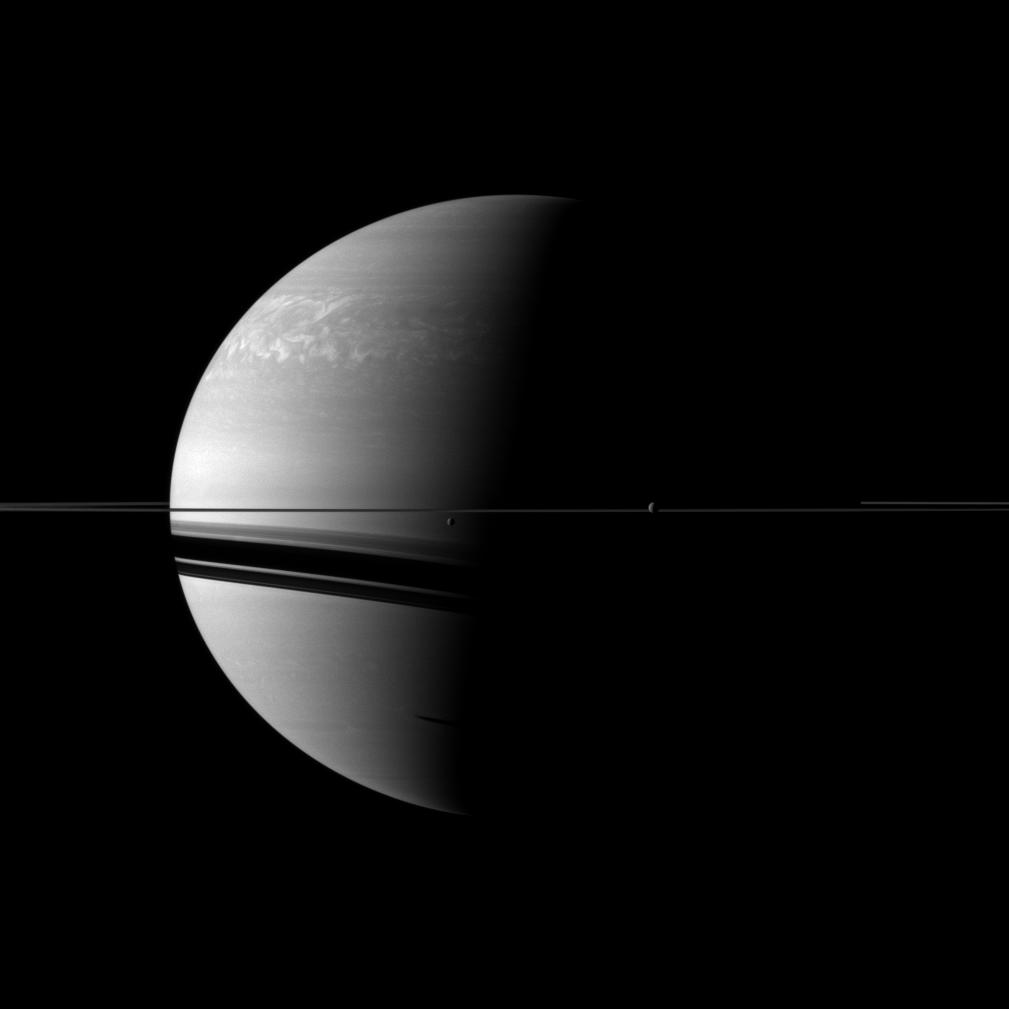Dwarfed by Gas Giant

| PIA Number | PIA12769 |
|---|---|
| Language |
|
Two moons, Rhea and Dione, join the planet and its rings in this view from the Cassini spacecraft. Rhea and Dione are respectively the second and fourth largest moons of Saturn, but they seem tiny compared to the planet.
Dione (1,123 kilometers, or 698 miles across) is near the center of the image. Rhea (1,528 kilometers, or 949 miles across) is on the right. The shadow cast by a third moon, Tethys, is also visible near the bottom of the image, south of the shadows cast by the planet's rings and near the terminator between light and dark. Tethys is not shown here. Part of the large storm that has been churning through the northern atmosphere for months can be seen in the top left of the image.
This view looks toward the northern, sunlit side of the rings from just above the ringplane.
The image was taken with the Cassini spacecraft wide-angle camera on March 11, 2011 using a spectral filter sensitive to wavelengths of near-infrared light centered at 752 nanometers. The view was obtained at a distance of approximately 2.9 million kilometers (1.8 million miles) from Saturn and at a Sun-Saturn-spacecraft, or phase, angle of 94 degrees. Image scale is 172 kilometers (107 miles) per pixel on Saturn.
The Cassini-Huygens mission is a cooperative project of NASA, the European Space Agency and the Italian Space Agency. The Jet Propulsion Laboratory, a division of the California Institute of Technology in Pasadena, manages the mission for NASA's Science Mission Directorate in Washington. The Cassini orbiter and its two onboard cameras were designed, developed and assembled at JPL. The imaging team is based at the Space Science Institute, Boulder, Colo.
For more information about the Cassini-Huygens mission visit http://saturn.jpl.nasa.gov or http://www.nasa.gov/cassini . The Cassini imaging team homepage is at http://ciclops.org .
Credit: NASA/JPL/Space Science Institute
